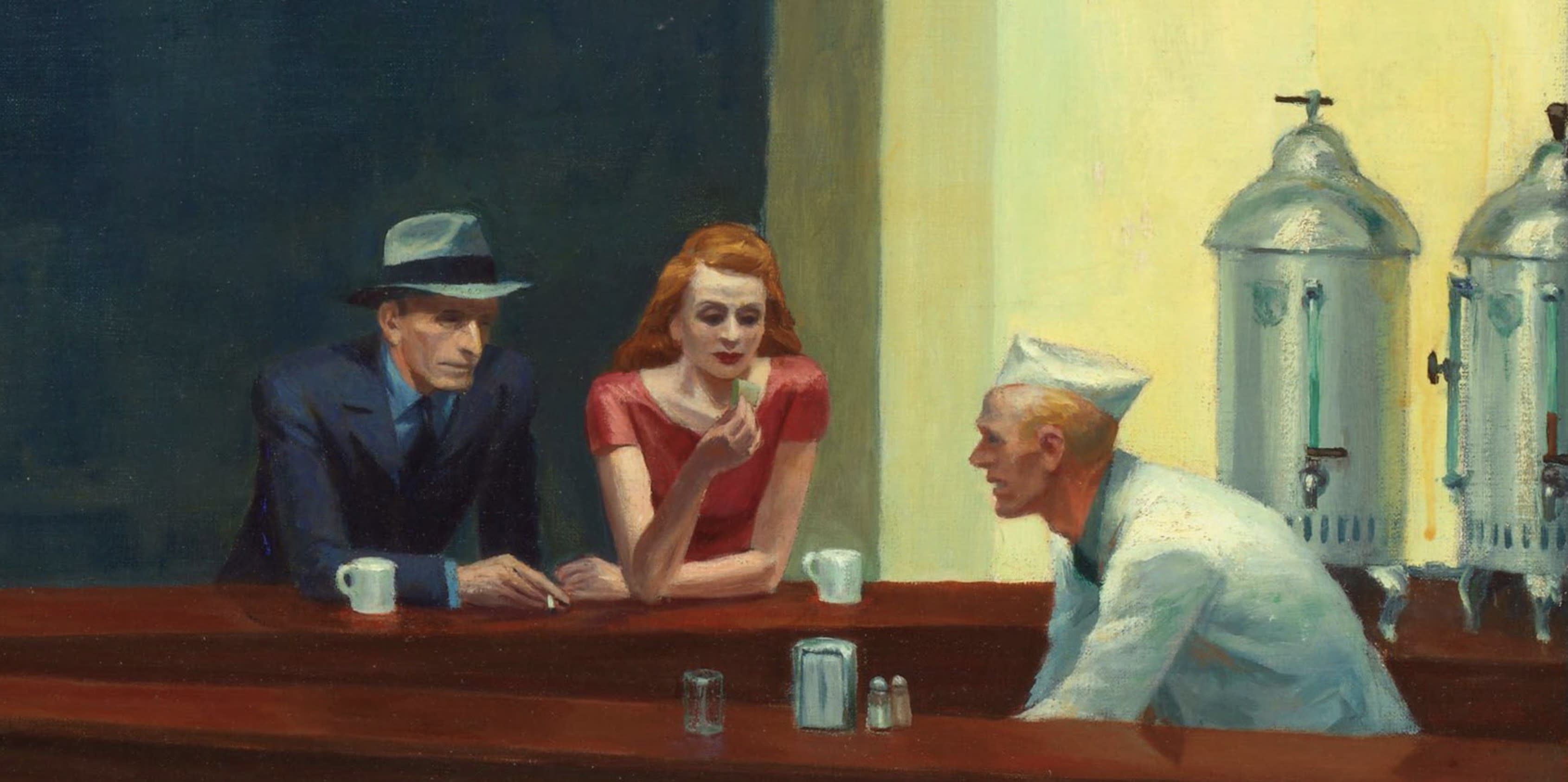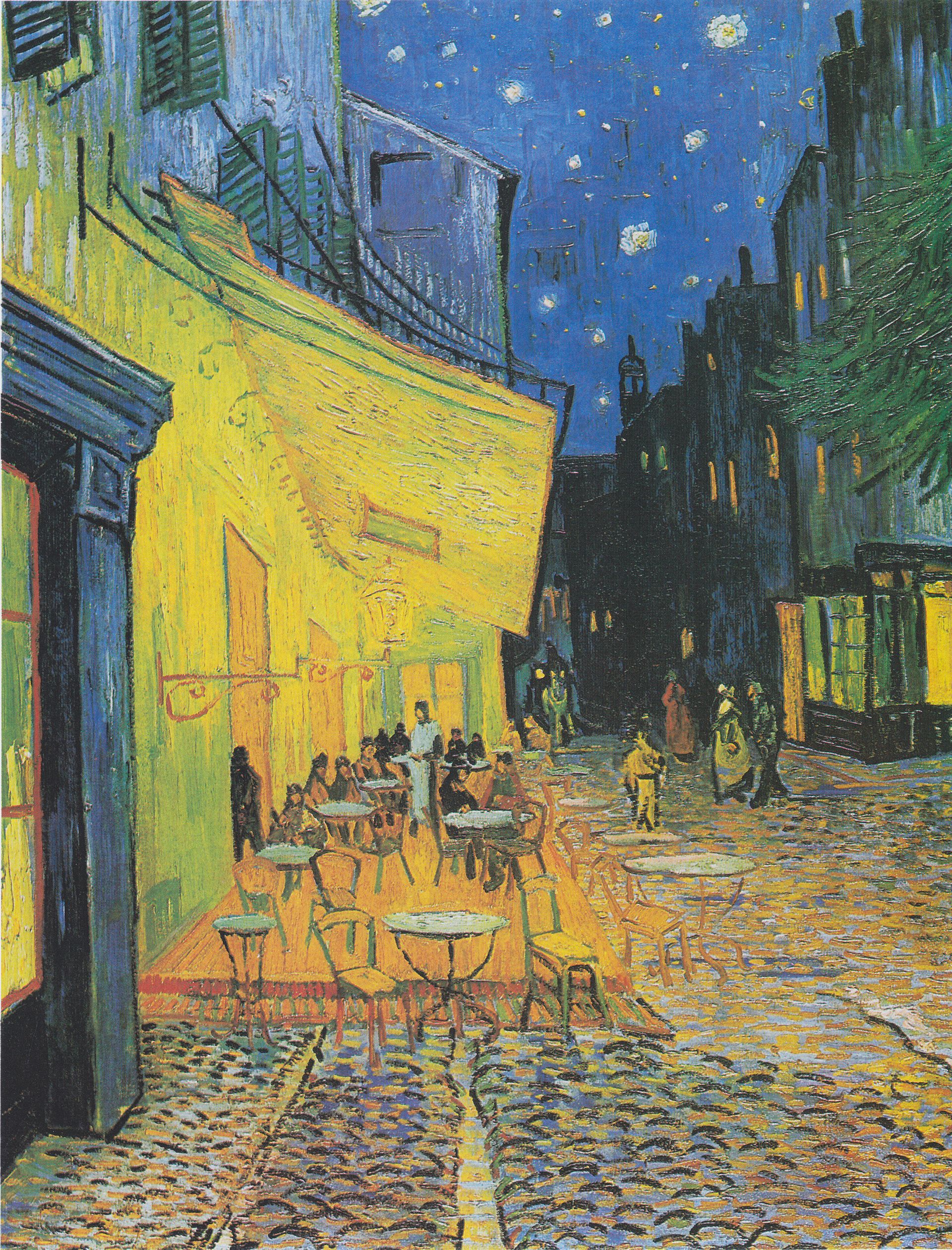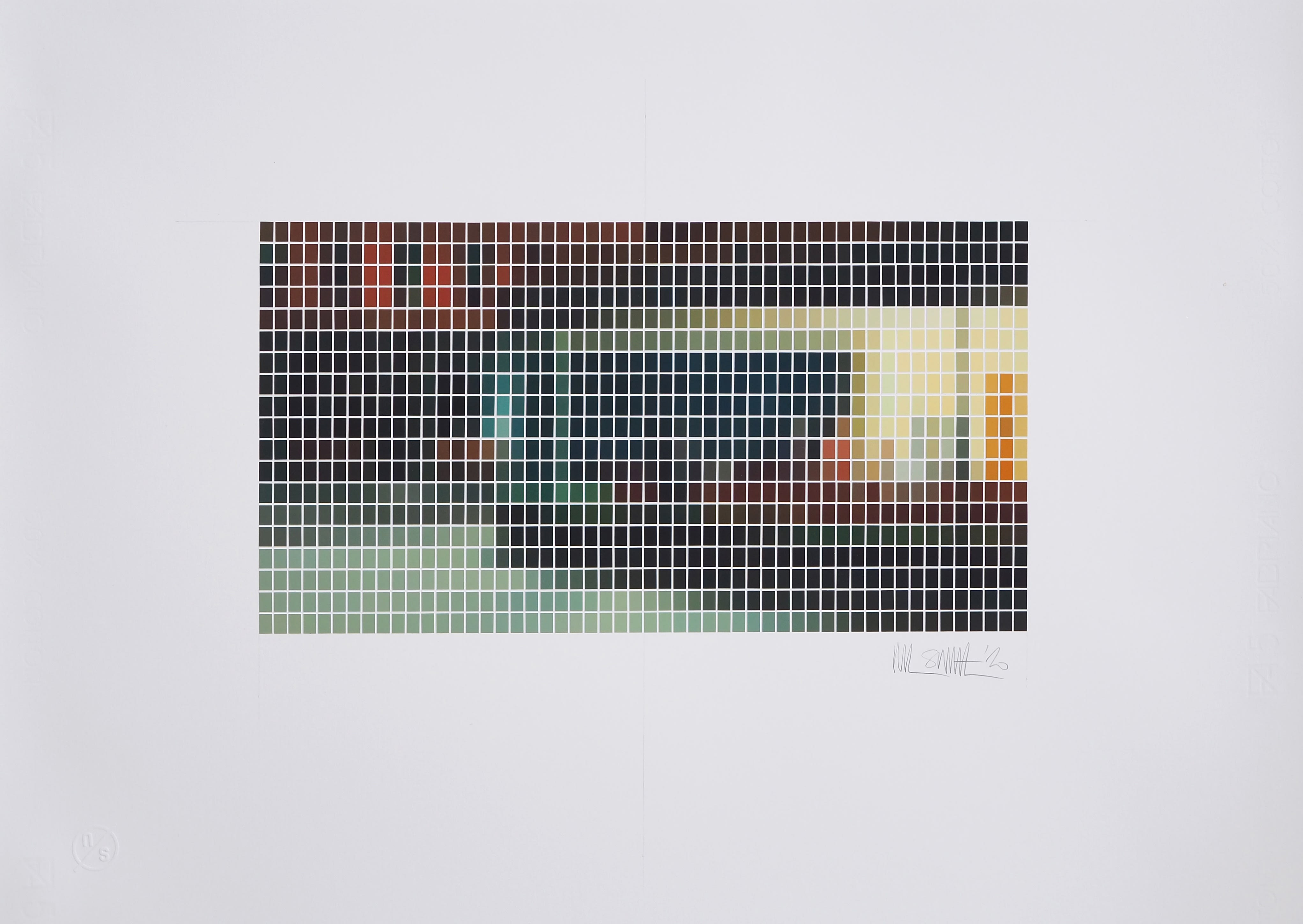‘Nighthawks’ by Edward Hopper is often recognised as one of the most famous artworks of 20th century America. The painting depicts a midnight scene of a diner, inside which 4 anonymous figures can be seen; two men, one woman and a bartender. ‘Nighthawks’ is often read as an exploration of human existentialism and loneliness in the modern age. The figures feel distant and disconnected from each other which is reflected by the viewer's literal distance from the interior scene which is separated by a bending glass exterior with no clear entrance. Although Hopper has said the painting does not specifically explore loneliness, he said of the work, “unconsciously, probably, I was painting the loneliness of a large city.”

‘Nighthawks’ was completed in January 1942 according to Hopper’s wife’s (Josephine) and was immediately sold to the Art Institute of Chicago where it remains today. The date of its completion is also significant as it was painted right after the bombing of Pearl Harbour, when the threat of being bombed in New York was very real. The painting is therefore understood as an expression of wartime alienation. The stark light within the painting created by fluorescent bulbs in the diner which leaks out into the nighttime street. Fluorescent aughts were becoming more popular in the 1940s so this view would have been considered relatively modern looking. The green hues within the painting further add to the mysterious aesthetic of the work. Other influences of the painting have been speculated, including Hopper’s biographer Gail Levin who beleived
Hopper was inspired by 'Café Terrace at Night' by Vincent van Gogh, which was exhibited in January 1942 in New York which Hopper no doubt would have seen.

The diner is based on a street in Greenwich Village, New York, however, research into the exact location the painting was based on has shown that the painting depicts not an actual place but an amalgamation of inner-city diner’s. The painting’s timeless and ambiguous setting makes it feel like the work could be a depiction of any lonely urban city.
The eery scene has captured the imagination of viewers, sparking intriguing and mystery around the unidentifiable figures who all seem to not know each other. The figures are modelled on Hopper himself and his wife Jo. The cinematic drama of the scene with the three strangers up late at night is created by Hopper’s intense use composition and light, which are common to his other works including ‘Chop Suey’. Hopper also succeeds in keeping the narrative on the scene open-ended. From Jo’s notes about the painting, the ‘Nighthawks’ title refers to the seated man with the beak-like nose next to the woman. “Ed has just finished a very fine picture--a lunch counter at night with 3 figures. Night Hawks would be a fine name for it. E. posed for the two men in a mirror and I for the girl. He was about a month and a half working on it.”
The famous American painting has recently been reimagined by Nick Smith in his unique visual language of pixellated collage chips for his current show ‘Pioneers’ which is a series inspired by the artist own fascination with American culture and the country’s pioneering spirit. Smith recreated ‘Nighthawks’ in two different scales; one as a large scale collage, measuring 74 x 121 cm. Each colour chip is associated with a word which speaks to the Artist’s melange of experiences from 2020, with text including ‘Deserted’ ‘Malaise’ and ‘Voyeuristic’, which all invoke new readings of the iconic work.
Smith has even created a smaller micro-chip version of the work.

NIGHTHAWKS - MICROCHIP, 2020
988 colour microchip collage on Fabriano 5 300gsm paper
50 x 71 cm
19 3/4 x 28 in
Edition of 3 plus 1 artist's proof
Copyright The Artist
Nick Smith will be releasing a new Nighthawks inspired print at the end of March, 2025. For more information, please email info@rhodeseditions.com.

